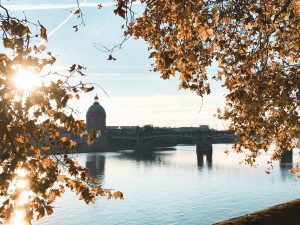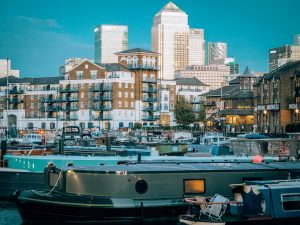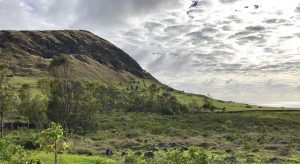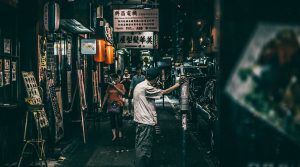Written From… A tower while alone on the Great Wall, China
After finishing my TEFL contract in Xi’an, I found myself left to my own devices, free to explore China in whatever way fit my fancy. I’ve always loved adventuring solo. Don’t get me wrong, friends and family can definitely add an extra layer of excitement to any trip while easing any apprehensions you may have about being alone in a new land.
But I think it’s precisely that fear – that forced confrontation of those apprehensions – that really challenges what we know about ourselves. Travel itself (aside from just being a fun way to experience something new) gives us the opportunity to grow by putting us in situations we wouldn’t normally face in our day-to-day lives, and having that sense of introspection that naturally accompanies solo adventures only enhances this aspect of travel.
However, these moments were challenged during my backpacking trip around China by one crucial factor: the massive population. China is home to nearly 1.3 billion people and is a major travel destination (and for good reason).
This isn’t to say that I disliked the crowds completely – I firmly believe that the people make the culture, even if that culture sometimes means that crowded busses force way too many people onto your lap – but the packed cities often made those precious moments of alone time seem impossibly distant.
Because of this, the idea of seeing any of the “must see” sights may seem like a pie in the sky, but there are a few tricks to carving out a few moments to yourself while still enjoying the beautiful life, culture, cities, and nature of this beautiful country.
The rule of thumb is that the more effort it takes to get somewhere, the less people there will be. This applies most to the famous Great Wall of China. The Great Wall being so… well, great, is divided into many sections, some of which are much better preserved than others. These preserved sections, such as Badaling and Mutianyu, are conveniently located and easy to get to, which makes them tourist hot spots. Expensive tourist hotspots at that.

Depending on your level of daring and adventure, there are incredible and, in my opinion, better alternatives. These sections are Jiankou, Gubeikou, and Huanghuacheng. These sections have not been restored and can be a little dangerous, but if you have a sense of adventure, a good pair of shoes, and plenty of water (plus some baozi for a mid-hike lunch) these hikes are definitely worth it.
Every step reminds you of the incredible history of the Great Wall and every view is a stunning landscape of China’s beautiful nature. The only other people you’ll see on this trek will be the occasional hiking team and their company may make for a great lunch party!
Beware, these hikes are not easy and at points the climb becomes very steep. If these sections sound too challenging, other sections that are slightly less popular than Badaling are Jinshanling and Simatai.

The Chinese Rice Terraces are another way to see the beauty of China while avoiding crowds. Granted, during major holidays and summer months, the rice terraces can get crowded so plan your trip accordingly.
At the rice terraces, though, many tourists only want to see the view from the top, snap their pictures, and leave (and tours sometimes only allow enough time for this) so if you’re backpacking through on your own, you can avoid crowds by opting instead to hike through the terraces (provided you can find a legitimate, non-intrusive path, which can be difficult). I believe that this is the only way to see the rice terraces, as it gets you right up in the action and hiking along them is an experience you just can’t miss.

Even in some of the cities, there are opportunities for you to get away from the crowds while still enjoying the opportunities China has to offer. In Guilin, there is a beautiful path that circles around the center of the city called the Two Rivers and Four Lakes circuit that runs along the Lijiang and Taohua rivers and the Rong, Gui, Shan, and Mulong lakes.
The entire circuit is short enough to do in a half-day, but beautiful and entertaining enough to make an entire day of. Of course, since it’s inside the city, stopping for lunch or dinner is much more convenient than it is at the Jiankou Great Wall.
The trail takes you right down along the water and, while the larger areas of the Lijiang River were crowded, almost no one else bothers with the rest of the circuit, making it the perfect place to enjoy a day to yourself before getting back into the more crowded-yet-exciting life of China.

These are all areas that I found to be nice getaways during my adventures through China, but of course all of these areas are subject to change. With a country like China, which has so much to offer and nearly anyone can find something that suits their travel tastes, people flock there from all over the world, making prime holidays difficult.
Whether you’re a first-time traveler or seasoned explorer, one of the very first things you’ll have to decide is when to travel. Typically, if avoiding crowds is a priority, your best bet is to avoid major holidays. The major one is the Spring Festival, a.k.a. Lunar New Year.
As one of China’s most important holidays, many people will be making trips and finding any sort of available transportation will be a nightmare. Another time to avoid would be the National Day Golden Week.
One thing to note is that just before or after these holidays, crowds are typically much lower as people are either anticipating or recovering from their vacation. This advice, of course, goes out the window if your goal is to experience some of the life of the festivals, such as the Spring Festival or the Mid-Autumn Festival.

The crowds, which at times can seem unbearable, are a part of the China travel experience, but the people all come together to make the culture. If you find yourself needing a moment to recollect yourself before diving back in, always remember that a little exploration off the beaten path can give you a nice breather and maybe a little extra story to bring home that you never imagined. As always, stay safe, have fun, and go explore!






